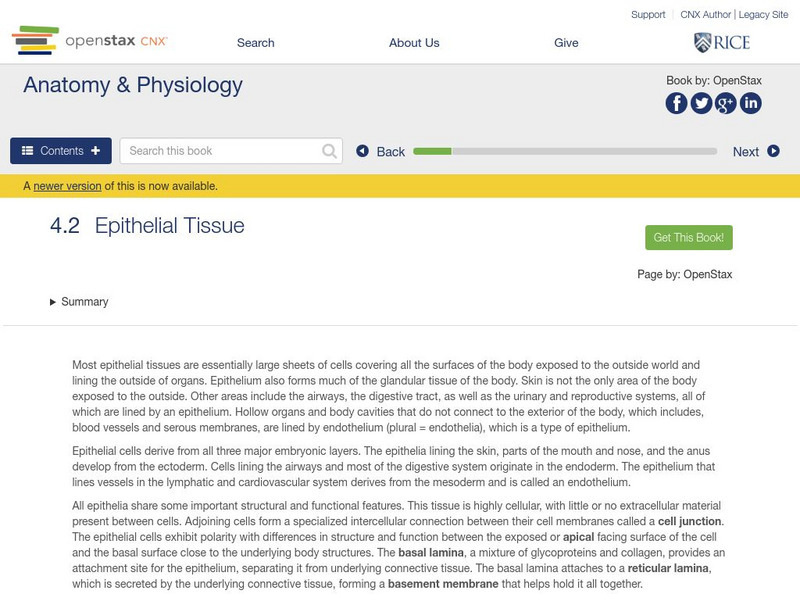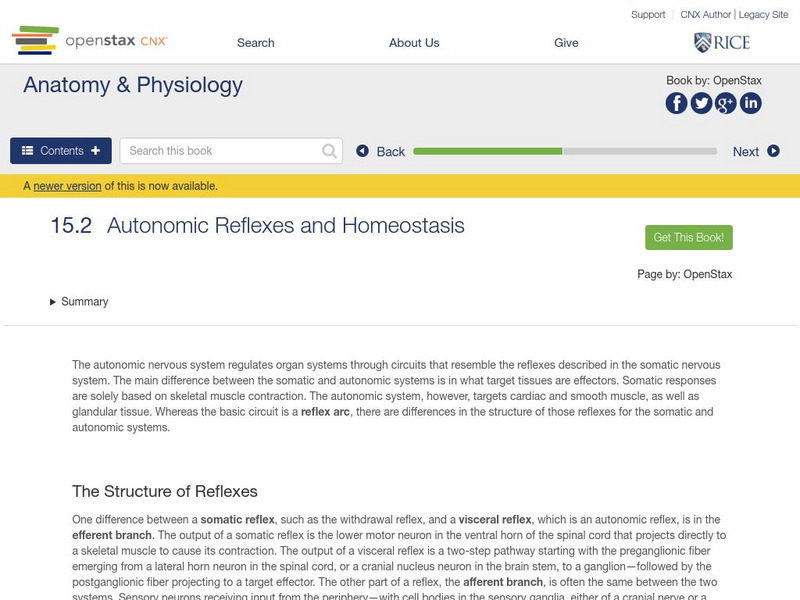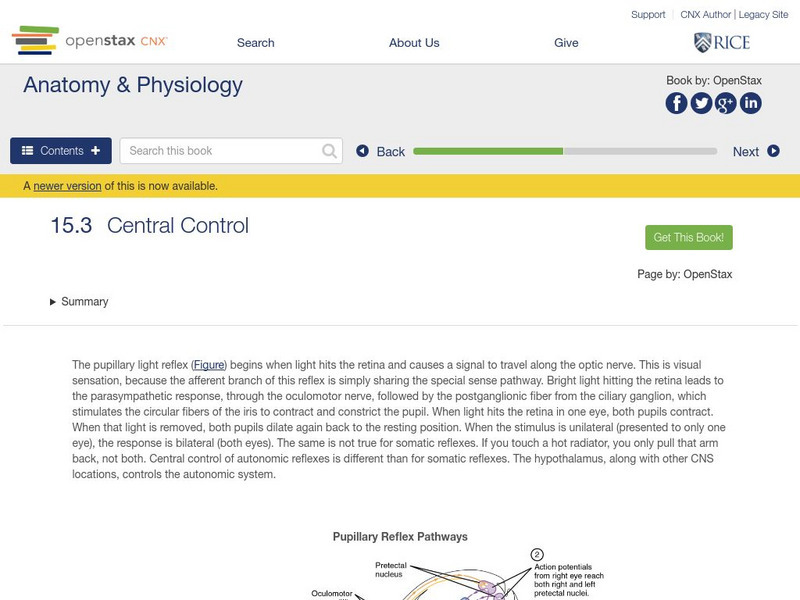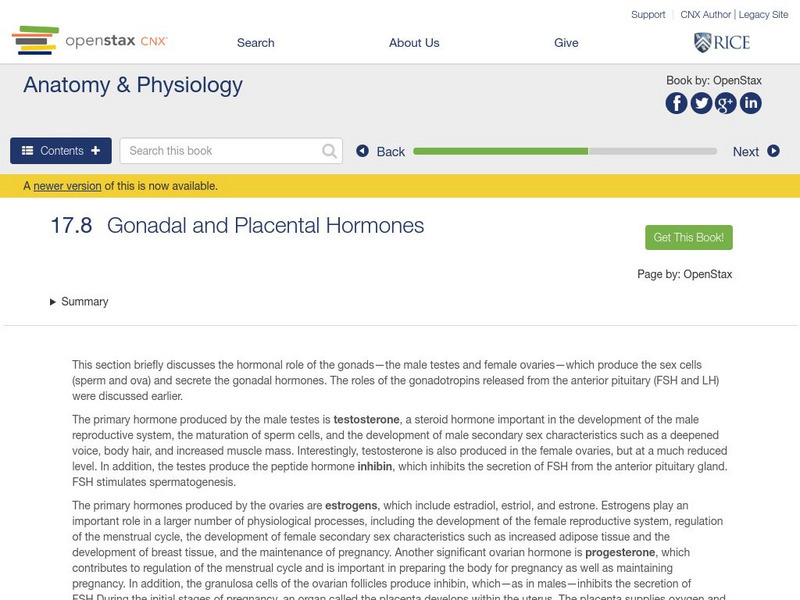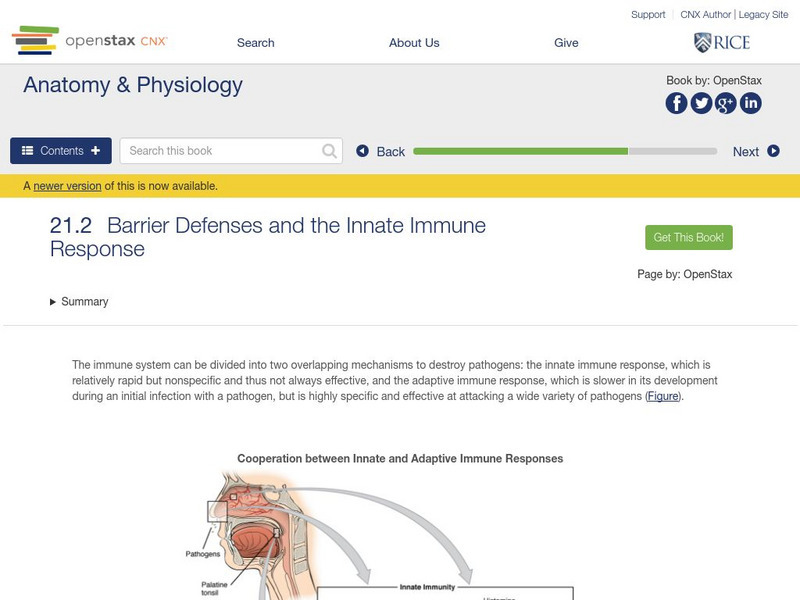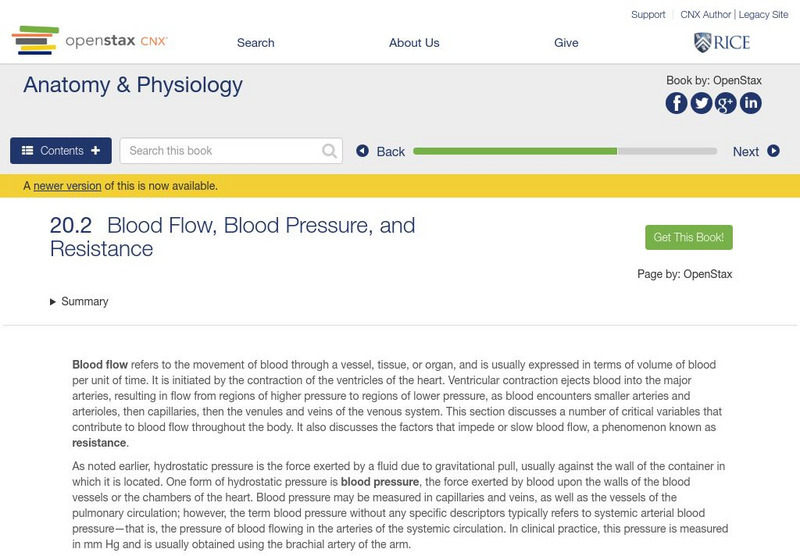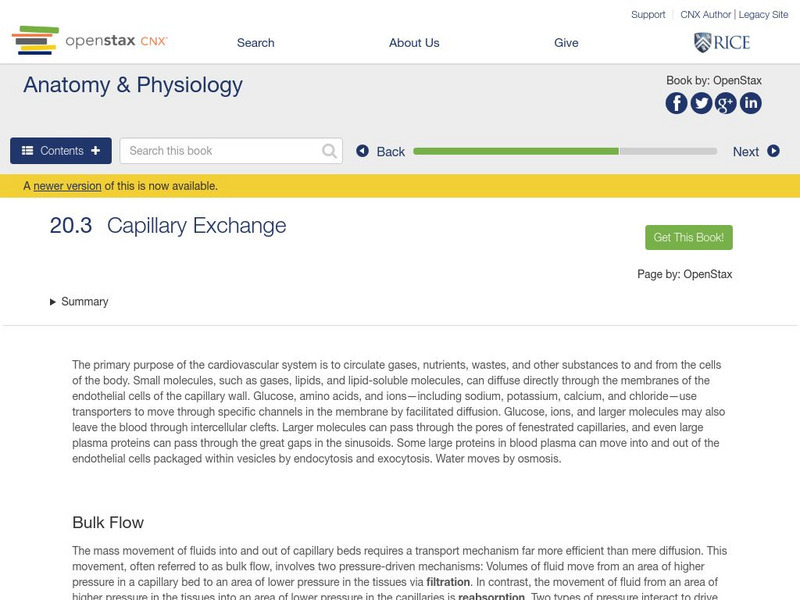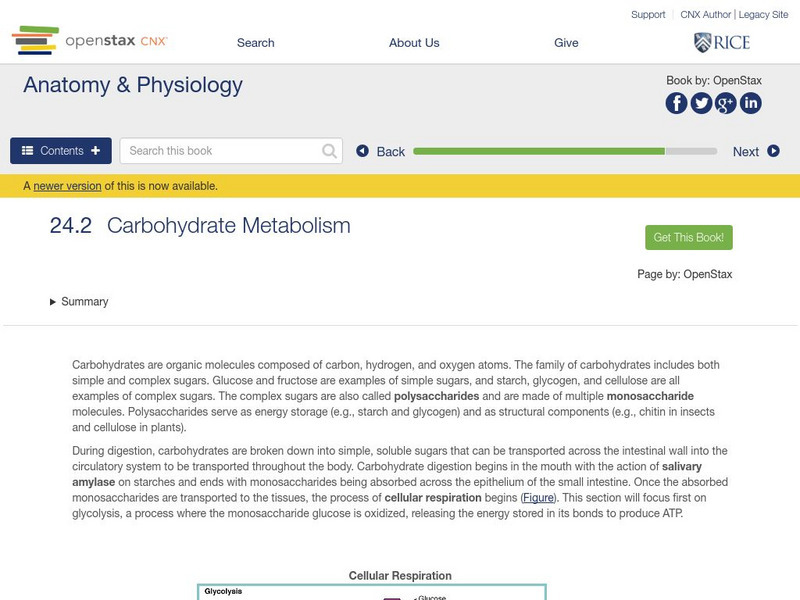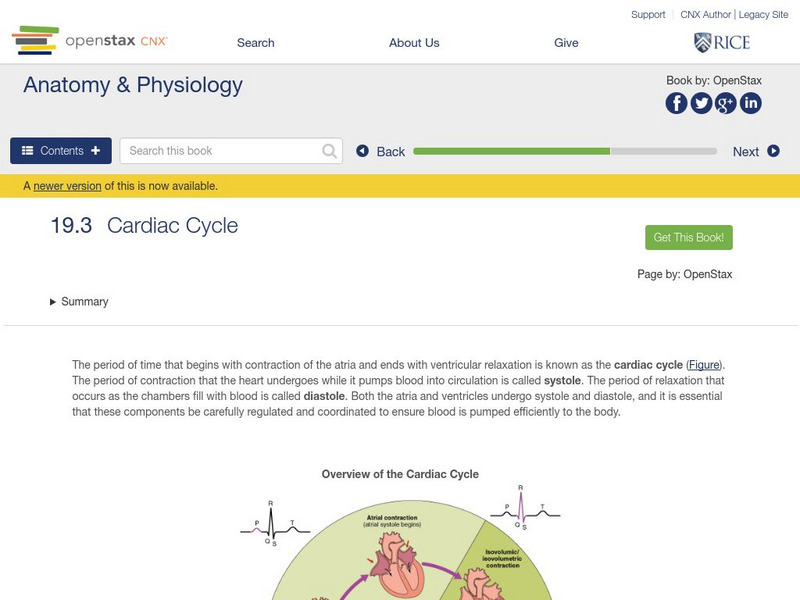OpenStax
Open Stax: Anatomy & Physiology: Gross Anatomy of the Kidney
Students learn about the external structure of the kidney, including its location, support structures, and covering, as well as the major internal divisions and structures of the kidney.
OpenStax
Open Stax: Anatomy & Physiology: Microscopic Anatomy of the Kidney
Students learn about the renal structures that conduct the essential work of the kidneys and cannot be seen by the naked eye.
OpenStax
Open Stax: Anatomy & Physiology: Epithelial Tissue
This learning module helps students better understand epithelial tissue - essentially large sheets of cells covering all the surfaces of the body exposed to the outside world and lining the outside of organs.
OpenStax
Open Stax: Anatomy & Physiology: Autonomic Reflexes and Homeostasis
Looks at how to determine the effect of the autonomic nervous system on the regulation of the various organ systems on the basis of the signaling molecules involved.
OpenStax
Open Stax: Anatomy & Physiology: Central Control
Students investigate the role of higher centers of the brain in autonomic regulation.
OpenStax
Open Stax: Anatomy & Physiology: Drugs That Affect the Autonomic System
Students learn about the classes of pharmaceuticals that interact with the autonomic nervous system, and then relate the consequences of nicotine abuse with respect to autonomic control of the cardiovascular system.
OpenStax
Open Stax: Anatomy & Physiology: Gonadal and Placental Hormones
Students will identify the most important hormones produced by the testes and ovaries, and learn about the hormones produced by the placenta.
OpenStax
Open Stax: Anatomy & Physiology: Acid Base Balance
Students learn how buffer systems in the body - the respiratory and the renal - affect the blood pH.
OpenStax
Open Stax: Anatomy & Physiology: Accessory Structures of the Skin
Learn here about the accessory structures of the skin, including, hair, nails, sweat glands, and sebaceous glands.
OpenStax
Open Stax: Anatomy & Physiology: Adaptive Immune Response: B Lymphocytes
Students will learn the structure and function of B-cells and the antibody classes and their functions.
OpenStax
Open Stax: Anatomy & Physiology: Adaptive Immune Response: T Lymphocytes
With these learning exercises, students explain the advantages of the human adaptive immune response over the innate immune response including the types of T cells, development, and their functions.
OpenStax
Open Stax: Anatomy & Physiology: An Overview of Blood
Find out about the characteristics and components of blood with informational text, diagrams, examples, and review questuons.
OpenStax
Open Stax: Anatomy & Physiology: Barrier Defenses and Innate Immune Response
Students use this module to learn about the barrier defenses and the immune defense functions of the human body.
OpenStax
Open Stax: Anatomy & Physiology: Blood Flow, Blood Pressure, and Resistance
Learn about the components and measurement of arterial blood pressure, as well as the variables affecting blood flow and blood pressure in this learning exercise.
OpenStax
Open Stax: Anatomy & Physiology: Blood Typing
Students learn about the science behind blood typing, and the application of that typing as it relates to human blood transfusions.
OpenStax
Open Stax: Anatomy & Physiology: Blood Vessel Development, Fetal Circulation
Students learn about the development of blood vessels, and how this contrbutes to fetal circulation.
OpenStax
Open Stax: Anatomy & Physiology: Capillary Exchange
Students learn about the primary mechanisms of capillary exchange and distinguish between capillary hydrostatic pressure and blood colloid osmotic pressure.
OpenStax
Open Stax: Anatomy & Physiology: Carbohydrate Metabolism
Students understand the process of carbohydrate metabolism, and the chemical processes involved in this aspect of digestion.
OpenStax
Open Stax: Anatomy & Physiology: Cardiac Cycle
Students learn the structure and function of the cardiac muscle and study the components of the conducting system that distributes electrical impulses through the heart during the cardiac cycle.
OpenStax
Open Stax: Anatomy & Physiology: Central Processing
Students learn the pathways that sensory systems follow into the central nervous system, and understand the difference between the two major ascending pathways in the spinal cord.
OpenStax
Open Stax: Anatomy & Physiology: Chemical Digestion/absorption: A Closer Look
In this module, find out the locations and primary secretions involved in the chemical digestion of carbohydrates, proteins, lipids, and nucleic acids.
OpenStax
Open Stax: Anatomy & Physiology: Circulation and the Central Nervous System
Students learn about the vessels that supply the central nervous system with blood.
OpenStax
Open Stax: Anatomy & Physiology: Communication Between Neurons
Students explain the differences between the types of graded potentials, and categorize the major neurotransmitters by chemical type and effect.
OpenStax
Open Stax: Anatomy & Physiology: Disorders of Acid Base Balance
Learn about the three blood variables considered when making a diagnosis of acidosis or alkalosis, and then find out the source of compensation for blood pH problems of a respiratory or renal origin.
Other popular searches
- Brain Anatomy & Physiology
- Muscle Anatomy & Physiology
- Anatomy & Physiology 1
- Anatomy & Physiology Models
- Anatomy & Physiology Videos
- Avian Anatomy & Physiology
- Anatomy & Physiology 2
- Anatomy & Physiology Knee


